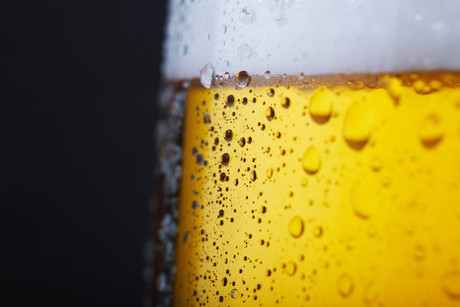The science behind a better brew

A good beer is all about the yeast, but can next-generation sequencing lead to a better brew?
Beer is one of the most heavily quaffed beverages on Earth, and its popularity is only growing, with new breweries sprouting up like mushrooms. But how do you make a great beer with just the right flavour, consistency, aroma and colour? The answer is in the yeast — the microbe that makes grain, hops and water into beer.
“You can take things like flavour profiles, alcohol percentage, the cloudiness, the colour of the beer — yeast genetics are a big contributor to all those things,” said Brian Steffy, senior lab manager at Illumina.
But what do we really know about yeast? Until recently, not much. Modern brewing originated in the 1700s, but it’s largely been moved forward through trial and error. To learn more, an international group of scientists, yeast producers and beermakers applied next-generation sequencing to yeast — and the results could lead to better beer.
The project began when Steffy ran into Loren Miraglia from Encinitas Brewing Science in Southern California. Miraglia had an interesting yeast strain he wanted to get sequenced. They discussed it over a beer or two, and Steffy suggested they sequence 96 strains, rather than just one.
Miraglia didn’t have 96 strains, but White Labs, a yeast producer based in San Diego, did. So White Labs supplied the yeast, Illumina did the sequencing and Synthetic Genomics conducted the analysis. Two Belgian universities collaborated as well. The results were published in the journal Cell.
The paper focused on how the domesticated yeasts used to make beer, bread and wine diverged from wild yeasts, and the findings could take some of the guesswork out of beermaking. Knowing a yeast’s precise genotype, and the phenotypic traits they confer, could boost quality control.
“A lot of brewers struggle with consistency,” said Steffy. “If you scale up, the beer never really tastes the same. A lot of that could have to do with the yeast. Maybe it doesn’t handle bigger batches. You can make choices that are going to serve you well if you’re planning to scale up.”
Furthermore, the genomic information could give brewers greater control over their beer, allowing them to target yeast(s) that produce the most desirable traits.
“Predicting the type of beer you’re going to make before you make it,” said Steffy. “Right now, it’s a lot of hit and miss.”
The Cell paper produced a lot of genotype data, while White Labs has spent years accumulating phenotype data. Now they have to associate the two datasets to identify the genes that produce specific traits.
To memorialise the research, White Labs created a beer in its honour — the White Labs Frankenstout, created with all 96 strains from the study. Meanwhile, Steffy is content with the memory of having worked on such a fun project, which just happened to play to Illumina’s strengths.
“We’re a genetics company,” he said. “We can support many applications.”
Originally published here.
Droplet microfluidics for single-cell analysis
Discover how droplet microfluidics is revolutionising single-cell analysis and selection in...
PCR alternative offers diagnostic testing in a handheld device
Researchers have developed a diagnostic platform that uses similar techniques to PCR, but within...
Urine test enables non-invasive bladder cancer detection
Researchers have developed a streamlined and simplified DNA-based urine test to improve early...



